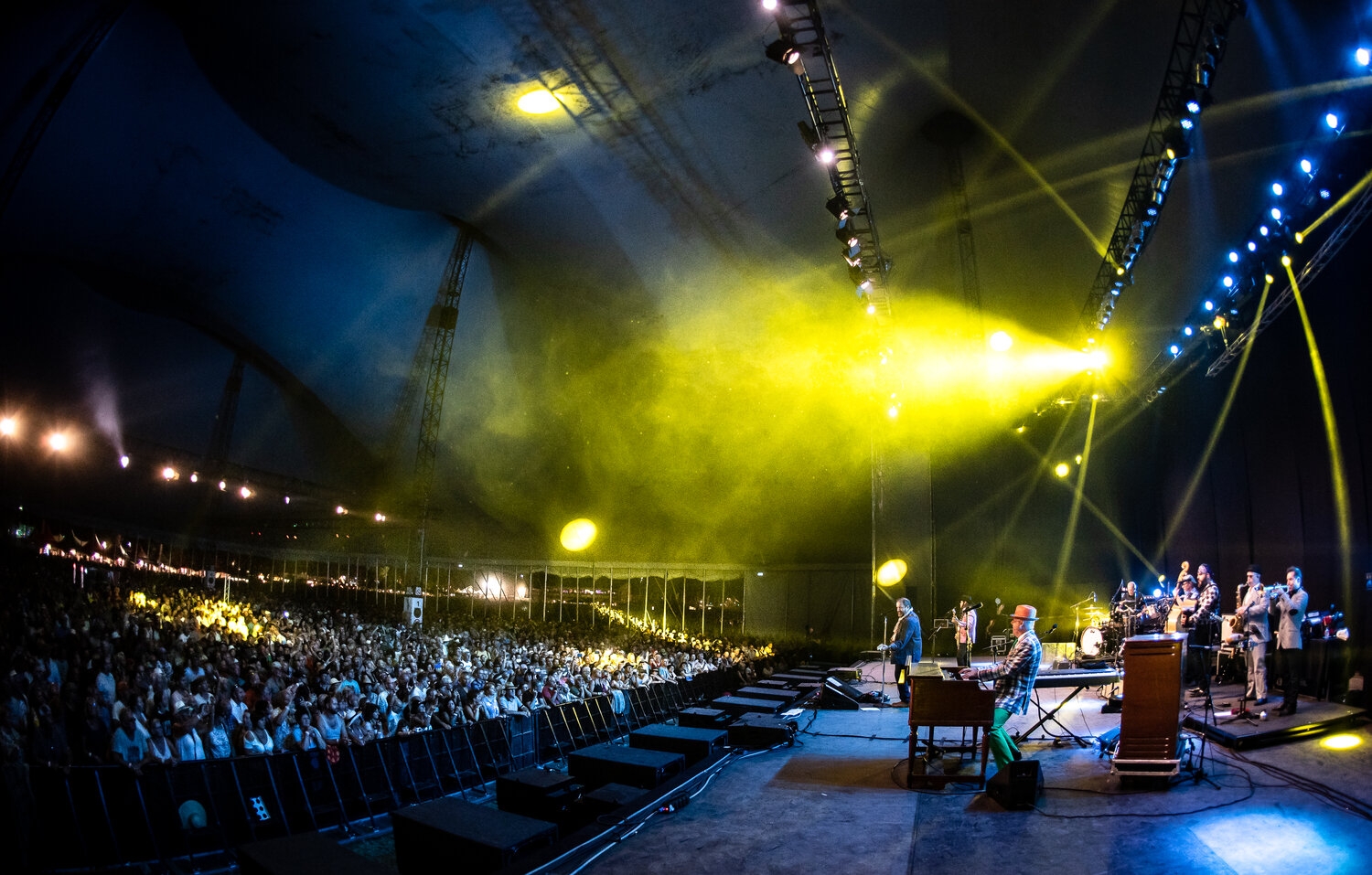
M.C. Escher: The Mathemagician Draws an Audience
A first-hand experience of the M.C. Escher exhibit at the National Gallery of Canada
An abrupt transition occurs when entering the bustling M.C. Escher exhibit from the quiet surroundings of gallery halls. Almost every work has multiple people transfixed in front of it.
The exhibition’s popularity is not surprising given the wonder and complexity of Escher and his influence on popular culture. The crowd waxes and wanes, ultimately determining the order and shaping the way in which the installation is experienced. Following an unspoken rule, the crowds form at the beginning and move clockwise throughout the gallery. Escher’s work is laid out, starting unassumingly with very clear and carefully made lithographs of Italian landscapes and escalating into a study of our consciousness and the mathematics of the impossible.
 Entering from the lobby, this installation is subdivided into three rooms. It begins with Italian Landscapes, the earlier of Escher’s works within the gallery, where the reality conveyed is by comparison rather ordinary. Of particular interest is a woodcut under glass, which gives a glimpse into his laborious creative process and work ethic. Many of the Italian landscapes were just that: landscapes. But one could see the beginnings of experimentation in perception and reflection. For example, in Street in Scanno, Abruzzi (1930), the prominent stairways are reminiscent of the impossible architectures from his later work. Also hanging in this room is Castle in the Air (1928), which is one of Escher’s earlier experiments in the fantastical. The horizon line between the vertical rain in the sky and the flat body of water had an infiniteness as powerful as the mid-air castle in the foreground.
Entering from the lobby, this installation is subdivided into three rooms. It begins with Italian Landscapes, the earlier of Escher’s works within the gallery, where the reality conveyed is by comparison rather ordinary. Of particular interest is a woodcut under glass, which gives a glimpse into his laborious creative process and work ethic. Many of the Italian landscapes were just that: landscapes. But one could see the beginnings of experimentation in perception and reflection. For example, in Street in Scanno, Abruzzi (1930), the prominent stairways are reminiscent of the impossible architectures from his later work. Also hanging in this room is Castle in the Air (1928), which is one of Escher’s earlier experiments in the fantastical. The horizon line between the vertical rain in the sky and the flat body of water had an infiniteness as powerful as the mid-air castle in the foreground.
Reflections on Perception is a transitional space between the other two rooms of the exhibit. It contains a selection across all periods of Escher’s work that focuses on mirrors, self-portraits and possibly even his own self-consciousness. Hand with Reflecting Sphere (1935) hangs here, the artist himself in his study. Still Life and Street (1937) is also a powerful piece depicting a scene from a table top, where books become buildings. This hangs next to the larger room that invites the viewer to continue toward Sky and Water I (1938) visible just a few steps away. Although it was busy, this second room had a quiet feel, perhaps because it was acoustically contained, and physically allowed for people to pass by should the crowd be deemed too large.
Stepping into the final room of the National Gallery of Canada’s exhibit, Regular Division of the Plane immediately confronts us with an entire wall devoted to Escher’s use of negative and positive space. Here, optical illusions are carved patterns that morph from geometric to often organic shapes. Some are well known, with people crowding around them to view what may be their favourite piece, or perhaps just charmed by their broad public appeal. As such, the crowds left an opportunity to view lesser known works in the same theme, leading to an appreciation of an M.C. Escher that would not have been available through an image search or bird’s eye understanding of his work. One such piece may have been Development II (1939), a woodcut in brown, green and black that is unnoticed amidst his more geometrically striking black and white works. Here, three separate wooden blocks were required for each colour, a sequential process that is the physical manifestation of the positive and negative space these patterns are so famous for.
In the far corner of the exhibit was Print Gallery (1956), a lithograph of Escher’s own lithographs hanging in a gallery. Here, a landscape swirls beyond its frame forming the city and shore behind the gallery before disappearing into an unknown void at the centre of the piece. It seems strange that Escher would opt to leave the centre blank. The lines suggest a deeper impossibility that would not be filled convincingly. An event horizon that remains hidden from view unless one were to somehow venture inside. This was not to be approximated. The entire image required a transform, rotation and scale to fit within this blank, and then again to fit the new and smaller blank, recursively until well beyond the grain of a wooden carving. Douglas R. Hofstadter wrote extensively in Gödel, Escher, Bach: An Eternal Golden Braid, that this blank spot is nothing less than the seat of consciousness: an infinite complexity unobservable from the outside. As such, there is a strong desire to fill this void, with Hendrik Lenstra leading one of the more notable attempts in Notices of the AMS, The Mathematical Structure of Escher’s Print Gallery.
Halfway through the exhibit, Impossible Architectures occupies a large space of iconic lithographs. Leaning in to view Waterfall (1961), there is a column under the aqueduct that made the illusion work. Attempting to uncover this trick leads to a moment of pause. Princess Ida, the lead character of the popular video game Monument Valley, whose aesthetic and challenge is reminiscent of Escher’s spatial enigmas, is perhaps now lost in the water wondering when to find her way again. The crowds push from the left and the lithographs roll forward to Escher’s Mathematics. Here, a glimpse of ants crawling over möbius strips in Möbius Strip II (1963) is seen, but the crowds rearrange to reveal Three Spheres I (1945), a study of mesh and wireframe familiar in modern CAD and 3D computer design, created before either ever existed.
Pushing onward and spiralling inward, the last piece, Day and Night (1938) leaves a person standing among the crowds, their clockwise journey completed. A lithograph of negative and positive space; Black geese fly across a bright countryside, beckoning toward the exit and the rest of the National Gallery. White geese fly toward darkness, pointing back to Reflections and Perception within the smaller room. An attempt is made to move back through the gallery. Soon however, the experience unwinds and the exit appears. Two guards nodding, passing a final lithograph the doors ease shut. Walking into the atrium of the National Gallery, daylight streams from the ceiling above.
A few days remaining — M.C. Escher: The Mathemagician is at the National Gallery of Canada 20 Dec 2014 to 03 May 2015.
Written by:
 Owen Fernley is an engineer and experimental musician. He builds user interface tools in javascript to aid in exploration geophysics, and has experience programming computational engines in Fortran and C. He codes conceptual HTML5 audio visualizers and collects field recordings for audio production and instrument sound design. He co-created Decomposing Pianos, an experimental music collective focusing on art, science, experimental music and new media. At his core, he is an improvisational piano player who applies the same methodology to the use of technology in the projects he pursues.
Owen Fernley is an engineer and experimental musician. He builds user interface tools in javascript to aid in exploration geophysics, and has experience programming computational engines in Fortran and C. He codes conceptual HTML5 audio visualizers and collects field recordings for audio production and instrument sound design. He co-created Decomposing Pianos, an experimental music collective focusing on art, science, experimental music and new media. At his core, he is an improvisational piano player who applies the same methodology to the use of technology in the projects he pursues.
Julia Krolik self identifies as a polymath. Formally educated in the sciences, her work has taken numerous turns and includes research involving micro/molecular biology, statistics, cell biology, biochemistry, geospatial analytics, public health, water quality and hydrogeology. As an exhibiting artist, Julia pushes her boundaries by exploring all mediums necessary (including radio, digital media, performance art, video art, experimental music and dance) to realize her ideas. She co-created Decomposing Pianos, an experimental music collective focusing on science, art, experimental music and new media. Her diverse background enables a rare cross-disciplinary empathy and she continuously advocates for both art and science.














